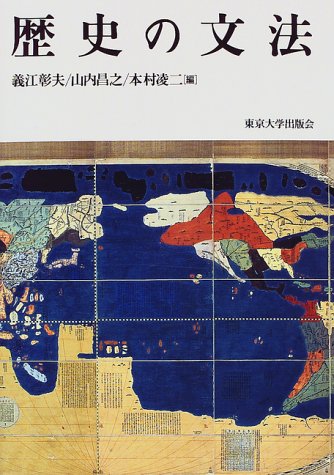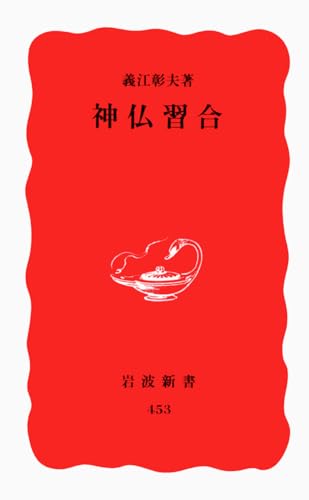4 0 0 0 歴史の文法
- 著者
- 義江彰夫 山内昌之 本村凌二編
- 出版者
- 東京大学出版会
- 巻号頁・発行日
- 1997
2 0 0 0 OA 鎌倉幕府地頭職の成立 (下)
- 著者
- 義江 彰夫
- 出版者
- 北海道大學文學部 = The Faculty of Letters, Hokkaido University
- 雑誌
- 北海道大學文學部紀要 (ISSN:04376668)
- 巻号頁・発行日
- vol.24, no.1, pp.1-133, 1975-11-27
1 0 0 0 十和田湖が語る古代北奥の謎
- 著者
- 義江彰夫 入間田宣夫 斉藤利男編著
- 出版者
- 校倉書房
- 巻号頁・発行日
- 2006
1 0 0 0 王朝国家刑罰形態の体系
- 著者
- 義江 彰夫
- 出版者
- 公益財団法人 史学会
- 雑誌
- 史学雑誌 (ISSN:00182478)
- 巻号頁・発行日
- vol.104, no.3, pp.295-340,459-46, 1995
The purpose of this paper is to survey penal legal institutions particular to "dynastic" Japan of the mid-and late-Heian period, to ascertain how the penal system worked, to examine the logic behind the system, and to probe the historical background to it. Chapter 1 discusses the penal law in the preceding ritsu-ryo period. Under the strong influence of the ancient Chinese penal system, the ritsu-ryo codes specified such punishments as corporal punishment, deportation, confiscation, penal servitude, and depfivation of social standing. The code reveals the government's total control and exploitation of criminals. The author argues that the formation of the code stemmed from ritsu-ryo Japan being born under international pressures of the time and forced to develop a bureaucratic and centralized nation following Chinese precedents, while preserving Japan's indigenous tradition. Chapter 2 breaks down dyndstic Japan's penal system into three categories: (1)Kurodo-to-Hosai: Under this law, the emperors judged their vassals' minor offenses, and the Kurodo-no-To, who was in charge of the vassals, executed the judgments. (2)Dajo-kan-Hosai: Under this law, the emperors, with the help of the Dajo-kan (the Cabinet), judged both the offenses committed by court nobles of the 5th or higher rank and all serious offenses. (3)Shicho-Sai: Under this law, the Kebiishicho (Department of Investigation) judged ordinary offenses committed by people of the 6th or lower rank. By examining these three categories, the auther demonstrates that dynastic Japan's penal code was centered around "exclusion" - deportation, deprivation, and detention - and that corporal punishment and confiscation existed only as unofficial of exceptional punishments. Chapter 3 examines the historical background which led to the formation of the dynastic Japan's penal laws based on exclusion. First, the author illustrates the jurisprudential construction which formed the dynastic code out of its ritsu-ryo predecessor. Secondly, he argues that the elaboration of taboos against impurity and crime had a decisive influence over the formation of the exclusion-based punishments of dynastic Japan. The paper concludes with an explanation of how corporal punishment and confiscation, once regarded as unofficial and exceptional by aristocratic legislators, came to be incorporated into the dynastic penal code by the end of the Heian period. This transformation coincided with the emergence of the warrior class and religious powers, which did not hesitate to use such penalties as corporal punishment. When the Kamakura-Bakufu was established, it reorganized penal law strictly based on corporal punishment and confiscation.
1 0 0 0 OA 日本の中世都市と寺社勢力
- 著者
- 義江 彰夫
- 出版者
- 国際基督教大学アジア文化研究所
- 雑誌
- 国際基督教大学学報 3-A,アジア文化研究別冊 = International Christian University Publications 3-A,Asian Cultural Studies Special Issue
- 巻号頁・発行日
- no.12, pp.39-70, 2003-03-31
1 0 0 0 源氏の東国支配と八幡・天神信仰
- 著者
- 義江 彰夫
- 出版者
- 日本史研究会
- 雑誌
- 日本史研究 (ISSN:03868850)
- 巻号頁・発行日
- no.394, pp.p1-29, 1995-06
1 0 0 0 IR 日本の中世都市と寺社勢力
- 著者
- 義江 彰夫
- 出版者
- 国際基督教大学アジア文化研究所
- 雑誌
- 国際基督教大学学報. III-A, アジア文化研究別冊 = International Christian University Publications. III-A, Asian Cultural Studies Special Issue
- 巻号頁・発行日
- vol.12, pp.39-70, 2003-03-31
1 0 0 0 浅香年木著『治承・寿永の内乱論序説』
- 著者
- 義江 彰夫
- 出版者
- 公益財団法人史学会
- 雑誌
- 史學雜誌 (ISSN:00182478)
- 巻号頁・発行日
- vol.91, no.8, pp.1324-1330, 1982-08-20


